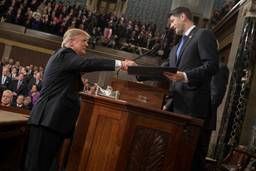
Anti-tax fever seems to be on the rise in Illinois, most recently in editorial and public comments about the Cook County Board of Commissioners’ levy on sugary drinks. But those who’ve fretted about the penny-an-ounce tax — and all of us who didn’t — might want to turn their attention and ire to a far-greater burden on Illinois taxpayers: Governor Bruce Rauner’s veto of legislation that would raise the minimum wage to $15 an hour over the next five years.
What does that have to do with taxes? Plenty. Roughly 33 percent of people in Illinois live in or near poverty. Contrary to popular belief, people who make low wages are not the young or the so-called low-skilled. As of 2011, 94 percent of low-wage earners in the Chicago region were over 20 years old, and 57.4 percent were over 30, with one in six holding a college degree. Many work in the growing sectors of hospitality, healthcare, food service and retail.
Despite the myth, these are not the employees of mom-and-pop businesses. Two thirds of all low-wage workers are employed by companies with more than 100 employees.
So how do these hard-working individuals and their families survive when their employers don’t pay a living wage? We, the taxpayers, subsidize their employers.
Most people think that programs like Medicaid, Supplemental Nutrition Assistance Program, Temporary Assistance for Needy Families and subsidized housing typically serve the unemployed. In fact, they are needed and used by individuals who work full-time for employers who don’t pay them enough for the bare necessities of life.
These critical programs cost taxpayers billions of dollars. Of this, $1.098 billion is paid directly by Illinois residents and the rest through federal taxes. This is dramatically higher than the estimated cost of the soda tax that has created so much controversy.
The most well-known beneficiaries are, of course, fast-food companies like McDonald’s or Burger King, which cost Illinois taxpayers an estimated $368 million a year. There is also Walmart, which employs more than 50,000 people in the state for a taxpayer cost of $222 million.
Even when some of these employers announce their wage increases, with great fanfare, Illinois taxpayers are still on the hook. According to Americans for Tax Fairness, Walmart’s increase to $9 or $10 an hour is inadequate: Workers who earn $9 an hour take home incomes so low that a single worker qualifies for three of five public benefit programs, and a worker with a family qualifies for all eight.
Poverty wages are typical in two other growth industries in Illinois. Nearly 50 percent of healthcare and childcare workers, and 25 percent of adjunct college professors, rely on public benefits.
The fact is that the best way to reduce taxpayer burden in Illinois is to override Governor Rauner’s veto of the increase in the minimum wage to $15. According to researchers at the University of California, this will save us $1.1 billion per year.
As to the governor’s argument that increasing the minimum wage will make the state less competitive, it’s hogwash. In 11 states and the District of Columbia, the minimum wage for adults is at least $9 an hour. From April 2015 to April 2016, those states saw significantly greater growth than states with minimum wages below $8 an hour. Closer to home, as Crain’s pointed out earlier this year, the only city in the state that is doing well is Chicago: the city that voted to increase the minimum wage in 2014.
There are many good reasons to increase the minimum wage. These include more money in circulation, less poverty, greater fundamental fairness and renewed reward and respect for hard work. That said, even if you care about none of those reasons, you should care about one thing: When corporations don’t pay, you do.








